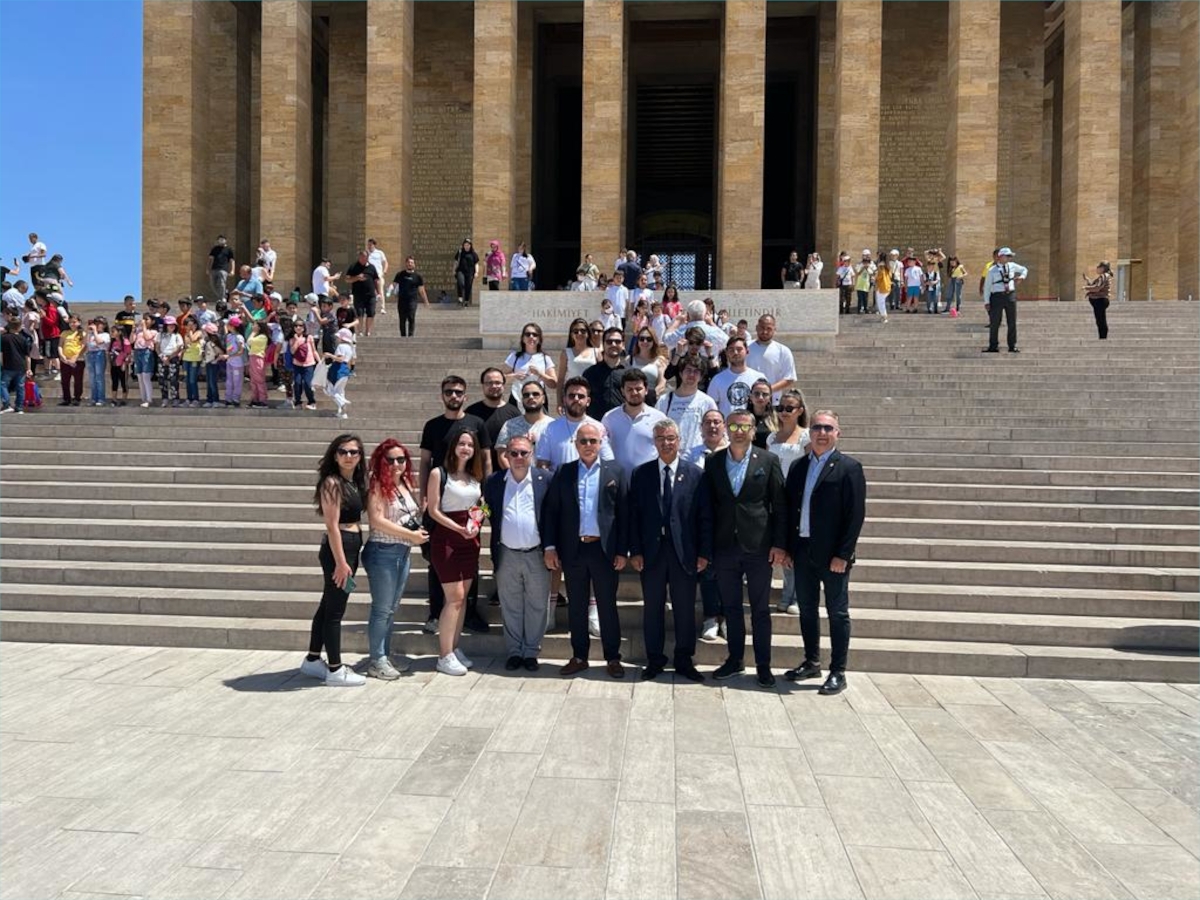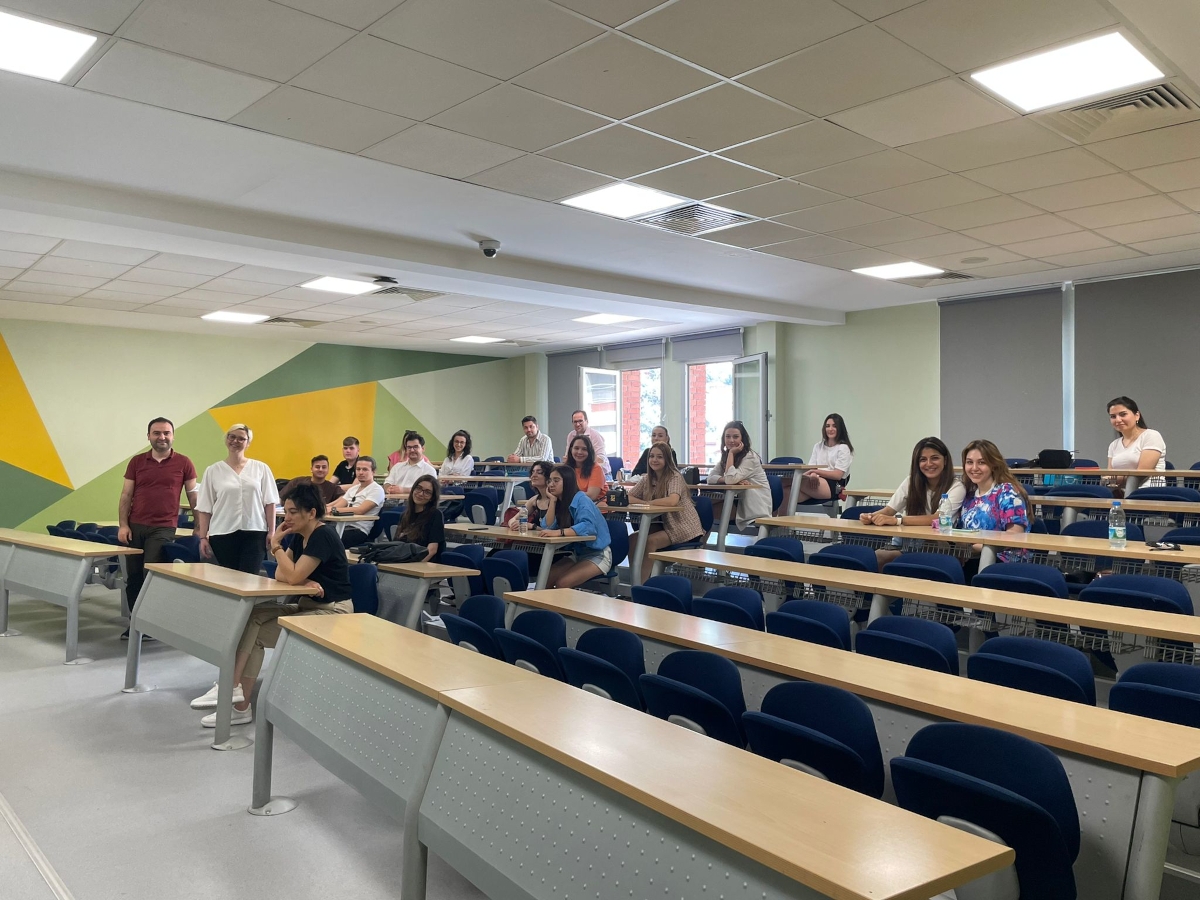
...

...

...
VOCATIONAL SCHOOL OF HEALTH SERVICES
Department of Opticianry| Course Name |
Ocular Anatomy and Physiology
|
|
Code
|
Semester
|
Theory
(hour/week) |
Application/Lab
(hour/week) |
Local Credits
|
ECTS
|
|
OPT 105
|
Fall
|
3
|
0
|
3
|
5
|
| Prerequisites |
None
|
|||||
| Course Language |
Turkish
|
|||||
| Course Type |
Required
|
|||||
| Course Level |
Short Cycle
|
|||||
| Mode of Delivery | - | |||||
| Teaching Methods and Techniques of the Course | DiscussionGroup WorkProblem SolvingQ&ALecture / Presentation | |||||
| National Occupation Classification | - | |||||
| Course Coordinator | ||||||
| Course Lecturer(s) | ||||||
| Assistant(s) | - | |||||
| Course Objectives | The aim of this course is to make the students understand anatomic structure of the eye and physiology of vision. |
| Learning Outcomes |
The students who succeeded in this course;
|
| Course Description | Bulbus Oculi, Layers of Bulbus Oculi, Refractive Structures, Auxiliary Parts of Eye, Nervus Opticus and Optic Tract, Reflexes Related to Eye, Introduction to Eye Physiology, Optics of Eye, Retina and Its Functions, Visual Perception in Central Nervous System. |
| Related Sustainable Development Goals |
|
|
|
Core Courses | |
| Major Area Courses |
X
|
|
| Supportive Courses | ||
| Media and Management Skills Courses | ||
| Transferable Skill Courses |
| Week | Subjects | Related Preparation |
| 1 | Introduction to Eye Anatomy and Physiology | Gözün Anatomisi ve Fizyolojisi, Doç. Dr. Hikmet Başmak, Esen Ofset Matbaacılık, 2005. S:11-17 |
| 2 | Substance Transport Through Cell Membrane, Excitation Mechanism of Cells | Yüksekokullar Için Fizyoloji. Ed.Prof.Dr. Berrak Ç.Yeğen. Yüce Yayım, 2014. Bölüm 2. |
| 3 | Cranium and Orbital Anatomy | Gözün Anatomisi ve Fizyolojisi, Doç. Dr. Hikmet Başmak, Esen Ofset Matbaacılık, 2005. S:19-29 |
| 4 | Non-Ocular Structures | Gözün Anatomisi ve Fizyolojisi, Doç. Dr. Hikmet Başmak, Esen Ofset Matbaacılık, 2005. S:47-74 |
| 5 | Quiz 1 Cranial Nerves | Gözün Anatomisi ve Fizyolojisi, Doç. Dr. Hikmet Başmak, Esen Ofset Matbaacılık, 2005. S:31-39 |
| 6 | Eye muscles and movement of eye muscles, extraocular mechanisms, (duction, version, vergence) | Yüksekokullar Için Fizyoloji. Ed.Prof.Dr. Berrak Ç.Yeğen. Yüce Yayım, 2014. Bölüm 2 |
| 7 | Midterm Exam | The textbooks referenced below and course slides |
| 8 | Structure of the Eyeball | |
| 9 | Eye Refractive Structures and Refraction Defects | Gözün Anatomisi ve Fizyolojisi, Doç. Dr. Hikmet Başmak, Esen Ofset Matbaacılık, 2005. S:87-112 |
| 10 | Stimulation of Retina and Photoreceptors | Gözün Anatomisi ve Fizyolojisi, Doç. Dr. Hikmet Başmak, Esen Ofset Matbaacılık, 2005. S:121-131 |
| 11 | Optic Tracts | Gözün Anatomisi ve Fizyolojisi, Doç. Dr. Hikmet Başmak, Esen Ofset Matbaacılık, 2005. S:41-45 |
| 12 | Processing of the image in the brain | Yüksekokullar Için Fizyoloji. Ed.Prof.Dr. Berrak Ç.Yeğen. Yüce Yayım, 2014. Bölüm 4 |
| 13 | Quiz 2 Refleksler | Gözün Anatomisi ve Fizyolojisi, Doç. Dr. Hikmet Başmak, Esen Ofset Matbaacılık, 2005. S:31-45 |
| 14 | Visual tests (Visual acuity, peripheral visual field, color vision, adaptation to light) | Görme Optiği Ve Refraksiyon, Doç. Dr. Ahmet Özer. Esen Ofset Matbaacılık, 2005. S:47-100 |
| 15 | General Review | |
| 16 | Final |
| Course Notes/Textbooks |
|
| Suggested Readings/Materials | 1- Prof.Dr. Kayıhan Şahinoğlu, Kliniğe Yönelik Anatomi, 2007 2- Prof.Dr. Mehmet Yıldırım, İnsan Anatomisi Atlası, 2006 3- Yüksekokullar için Fizyoloji. Ed.Prof.Dr. Berrak Ç.Yeğen. Yüce Yayım, 2014 4- Ganong un Tıbbi Fizyolojisi, Çeviri editörü Prof. Dr. Hakkı GÖKBEL, 2011 5- Ahmet Özer. Görme Optiği ve Refraksiyon. Esen Ofset Matbaacılık, 2005 6- Aydın P. Çeviri Editörü. Amerikan Göz Akademisi Temel ve Klinik Bilimler Kursu, Cilt 3, Klinik Optik, Güneş Tıp Kitabevi, Ankara 2008. |
| Semester Activities | Number | Weigthing |
| Participation |
1
|
10
|
| Laboratory / Application | ||
| Field Work | ||
| Quizzes / Studio Critiques |
2
|
20
|
| Portfolio | ||
| Homework / Assignments | ||
| Presentation / Jury | ||
| Project | ||
| Seminar / Workshop | ||
| Oral Exams | ||
| Midterm |
1
|
30
|
| Final Exam |
1
|
40
|
| Total |
| Weighting of Semester Activities on the Final Grade |
4
|
60
|
| Weighting of End-of-Semester Activities on the Final Grade |
1
|
40
|
| Total |
| Semester Activities | Number | Duration (Hours) | Workload |
|---|---|---|---|
| Theoretical Course Hours (Including exam week: 16 x total hours) |
16
|
3
|
48
|
| Laboratory / Application Hours (Including exam week: '.16.' x total hours) |
16
|
0
|
|
| Study Hours Out of Class |
14
|
3
|
42
|
| Field Work |
0
|
||
| Quizzes / Studio Critiques |
2
|
10
|
20
|
| Portfolio |
0
|
||
| Homework / Assignments |
0
|
||
| Presentation / Jury |
0
|
||
| Project |
0
|
||
| Seminar / Workshop |
0
|
||
| Oral Exam |
0
|
||
| Midterms |
1
|
14
|
14
|
| Final Exam |
1
|
20
|
20
|
| Total |
144
|
|
#
|
Program Competencies/Outcomes |
* Contribution Level
|
|||||
|
1
|
2
|
3
|
4
|
5
|
|||
| 1 |
To have the required contemporary theoretical and practical knowledge in his/her field |
-
|
-
|
-
|
-
|
X
|
|
| 2 |
To use the material and technology related to his/her field, and make their maintenance, use the information and communication technologies at basic level |
-
|
X
|
-
|
-
|
-
|
|
| 3 |
To have the competency to recognize the problems in his/her field, analyze them, develop evidence-based solutions and have the ability to share their suggestions with others |
-
|
-
|
-
|
-
|
-
|
|
| 4 |
To be aware of legal responsibilities, conduct basic studies in her/his field independently |
-
|
-
|
-
|
-
|
-
|
|
| 5 |
To communicate with patients, relatives and colleagues properly, comprehensively, honestly and explicitly, transfer his/her thoughts and knowledge through written and oral communication |
-
|
-
|
-
|
-
|
-
|
|
| 6 |
To take responsibility as an active team member during the practices in his/her field |
-
|
-
|
-
|
-
|
-
|
|
| 7 |
To commentate and evaluate the scientific information with a critical approach by the help of knowledge gained in his/her field |
-
|
-
|
-
|
-
|
-
|
|
| 8 |
To comprehend the importance of lifelong learning, to determine and meet her/his learning needs, to develop herself/himself by monitoring the development in science and technology |
X
|
-
|
-
|
-
|
-
|
|
| 9 |
To act by considering the universal ethical values, social and cultural characteristics |
-
|
-
|
-
|
-
|
-
|
|
| 10 |
To know the concepts of occupational safety, patient safety, environmental protection and quality, and fulfill the requirements |
-
|
-
|
-
|
-
|
-
|
|
| 11 |
To be able to follow information in his field and communicate with colleagues in English at least a level of European Language Portfolio A2 General Level |
-
|
-
|
-
|
-
|
-
|
|
| 12 |
To have knowledge and skills related to the administrative responsibility and management of an optician’s store |
-
|
-
|
-
|
-
|
-
|
|
| 13 |
To monitor visual health related products, determine the needs of the optician’s store and carry out activities for development |
-
|
-
|
-
|
X
|
-
|
|
*1 Lowest, 2 Low, 3 Average, 4 High, 5 Highest

...

...

...

As Izmir University of Economics transforms into a world-class university, it also raises successful young people with global competence.
More..Izmir University of Economics produces qualified knowledge and competent technologies.
More..Izmir University of Economics sees producing social benefit as its reason for existence.
More..